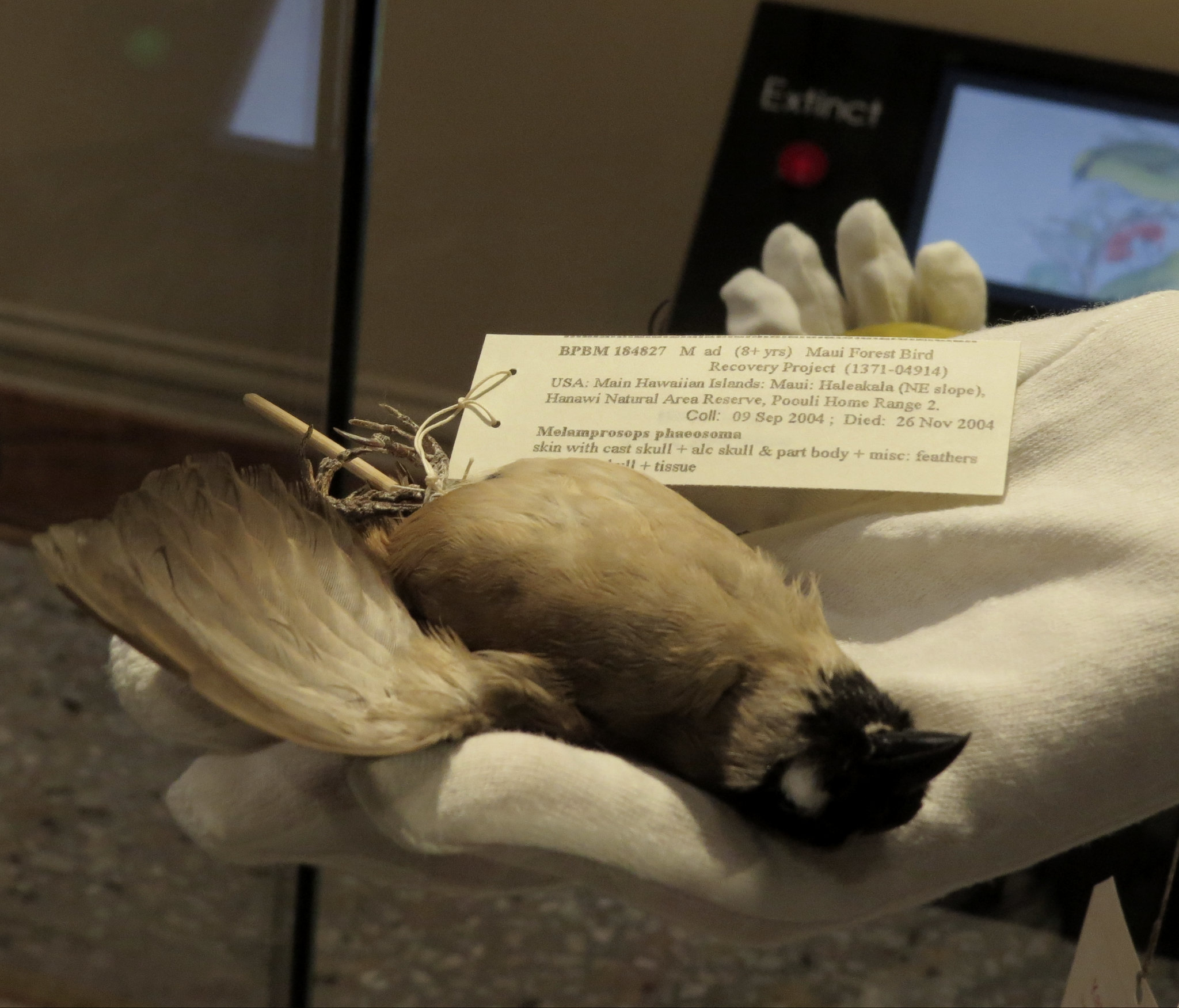Eight Hawaiian bird species declared extinct
The US Fish and Wildlife Service (USFWS) has lined up 21 species, including 10 birds, to be categorised as extinct. Among these are eight Hawaiian bird species.
It is considered likely that the majority of the species to be declared extinct had already died out by the time they were added to the Endangered Species Act. Once the rule to recognise the extinctions takes effect on 15 November, they will be removed from the list of species protected under the act.
The eight Hawaiian birds declared extinct are Kauai Akialoa, Kauai Nukupuu, Kauai Oo, Kamao, Maui Akepa, Maui Nukupuu, Kakawahie and Poo-uli, the last being the only species still known to exist when it was listed under the ESA.

Poo-uli is the only species known to have still existed when it was listed under the US Endangered Species Act, but there have been no confirmed sightings of this honeycreeper since 2004 (David Eickhoff via Flickr).
Michael Parr, president of the American Bird Conservancy (ABC), said: "Most of these extinct birds are Hawaiian species that were unique to those islands. It's a tremendous loss.
"Their ESA listings happened too late for their protection and recovery. Sadly, this tragic outcome could have been prevented if actions to conserve their habitats had been taken sooner."
Bachman's Warbler, once found in the southern states and its Cuban wintering grounds, is the only mainland US bird to be officially recognised as extinct. The tenth bird species is Bridled White-eye, formerly found in Guam.
Martha Williams, director of the USFWS, said: "Federal protection came too late to reverse these species' decline, and it's a wake-up call on the importance of conserving imperiled species before it's too late.
"As we commemorate 50 years of the Endangered Species Act this year, we are reminded of the Act's purpose to be a safety net that stops the journey toward extinction. The ultimate goal is to recover these species, so they no longer need the Act's protection."
Parr added: "Some may use this data to suggest that the ESA has somehow failed. That would be incorrect since most of these species were either already extinct when the Act became law, or so rare and threatened that it was too late for conservation initiated under the Act to save them.
"The ESA's success rate has actually been extremely good with very few extinctions and many species recoveries since it was passed."
Hawaii has been dubbed the 'bird extinction capital of the world', the islands being home to a number of other species threatened with extinction. The main threats to birds in the archipelago are habitat loss and invasive species, while honeycreepers have suffered especially badly from diseases brought in with invasive mosquitos.
ABC is helping co-ordinate the 'Birds, Not Mosquitos' programme to disrupt the breeding cycle of invasive mosquitos. A laboratory is rearing male mosquitos that will be unable to breed with wild females in Hawaii.
Steve Holmer, vice president of policy for ABC, said: "The longer conservation efforts continue, the better the results. It is essential that species be listed for protection under the ESA before they are in crisis, and that the ESA remain strong to guard against future extinctions."

